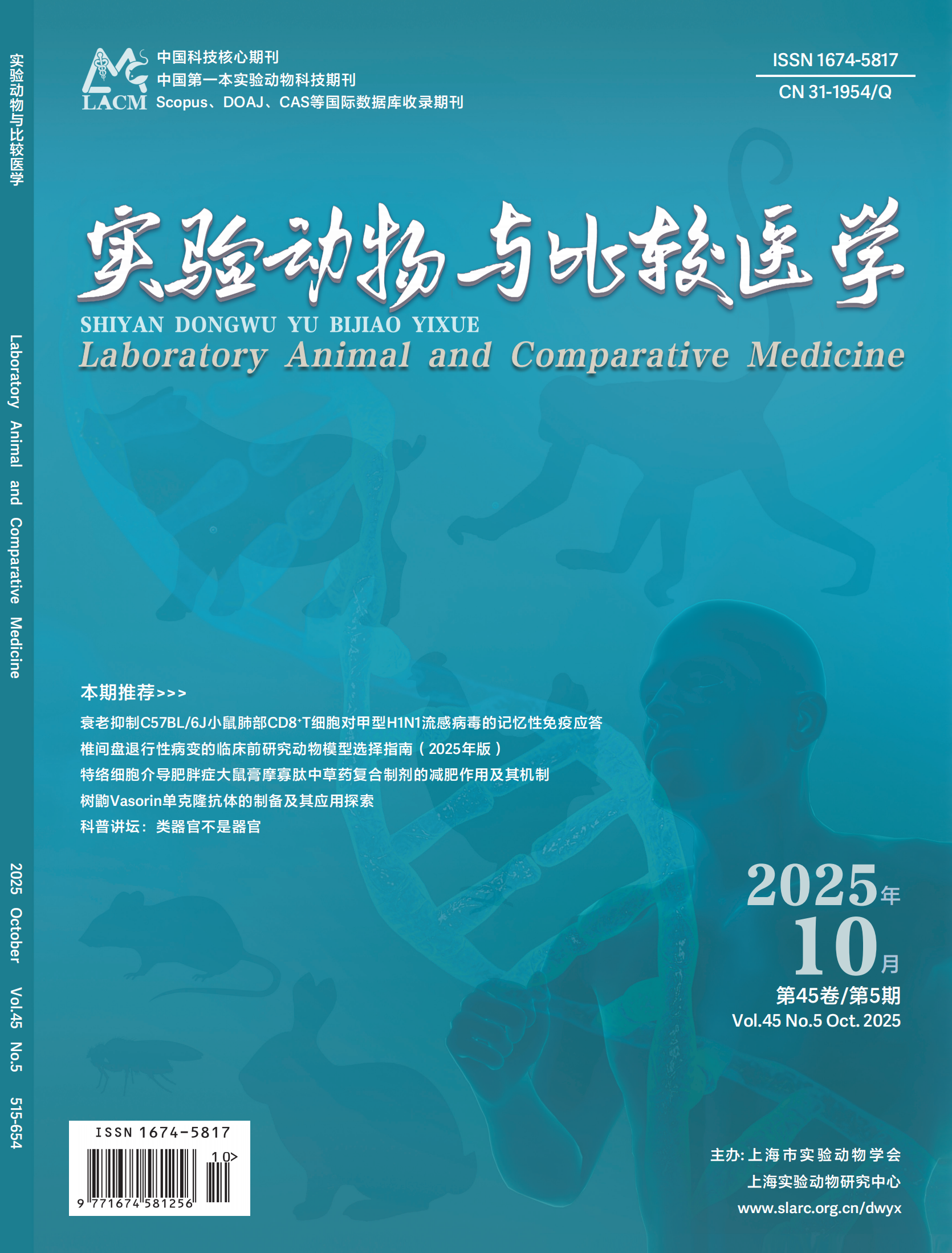Objective By simulating the etiology of abnormal uterine bleeding-ovulatory dysfunction (AUB-O) and establishing a rat model of abnormal uterine bleeding (AUB), this study aims to provide an experimental platform for investigating pathological mechanisms and developing therapeutic drugs for AUB. Methods After acclimation, 24 adult (10-week-old) female SD rats were randomly divided into a normal control group (6 rats) and a model group (18 rats). The normal control group was housed in a barrier environment, while the model group underwent bilateral ovariectomy via dorsal approach in the same environment and rested for one week before starting to receive modeling drugs. In the model group, from Days 1 to 3 of modeling, each rat received a daily subcutaneous injection of 0.5 mg estradiol into the dorsal region. From Days 4 to 7, a daily subcutaneous injection of 5.0 mg progesterone was administered. On Day 6, rats received bilateral injections of 0.5 mL soybean oil per uterine cavity (total 1.0 mL) via the same dorsal surgical incision. On Day 8, mifepristone (10 mg/kg) was administered via oral gavage. The estrous cycle stage and its dynamic changes were continuously monitored during modeling. Uterine bleeding was recorded during the 48-hour observation period post-modeling. Serum and uterine tissue samples were collected from the model group at 0, 12, 24, 36, and 48 h after mifepristone administration, while the normal control group was sampled at 36 h. The samples were subjected to HE staining, serum sex hormone ELISA, immunohistochemistry, TUNEL apoptosis staining, Western blotting, transcriptome sequencing, and bioinformatics analysis for comprehensive evaluation of the AUB rat model. Results The AUB rats exhibited uterine bleeding, endometrial detachment and injury, incomplete uterine restoration, inflammatory cell infiltration in the endometrium, enhanced tissue apoptosis, and structural damage of the stroma, glands, and vasculature. Compared with the normal control group, the levels of serum follicle-stimulating hormone (FSH), estradiol, and luteinizing hormone (LH) were significantly increased in the AUB rats (P<0.05). The vascular density of the endometrium was significantly reduced (P<0.05). The expression of vascular endothelial growth factor (VEGF) was qualitatively observed to be markedly enhanced at the site of endometrial detachment but significantly decreased around the stromal blood vessels (P<0.01). Matrix metalloproteinase-9 (MMP-9) expression was qualitatively observed to be strongly upregulated at the site of endometrial injury but significantly reduced in the non-detached stroma and glands (P<0.01). Endometrial stromal cell apoptosis was significantly enhanced (P<0.01). The expression levels of fibroblast growth factor 2 (FGF2) and endothelin-1 (ET-1) in uterine tissues were significantly decreased (P<0.05). After comparing the transcriptome sequencing results of uterine tissues between AUB and normal rats, a total of 4 723 differentially expressed genes were identified, including 2 191 up-regulated genes and 2 532 down-regulated genes. KEGG enrichment analysis revealed that these differentially expressed genes were significantly enriched in pathways related to inflammation, immune apoptosis, cell signal transduction, proliferation and differentiation, and muscle contraction, among others. Conclusion An AUB rat model can be successfully established using a sequential administration protocol of estrogen, progesterone, and mifepristone to simulate the etiology of AUB-O. In this model, endometrial injury is associated with inflammation and apoptosis, with pathological manifestations influenced by abnormal vasoconstriction and impaired endometrial regeneration. This rat model closely recapitulates pathological characteristics of non-structural AUB observed in clinical practice, making it a validated experimental platform for exploring the pathological mechanisms and therapeutic interventions of non-structural AUB.

